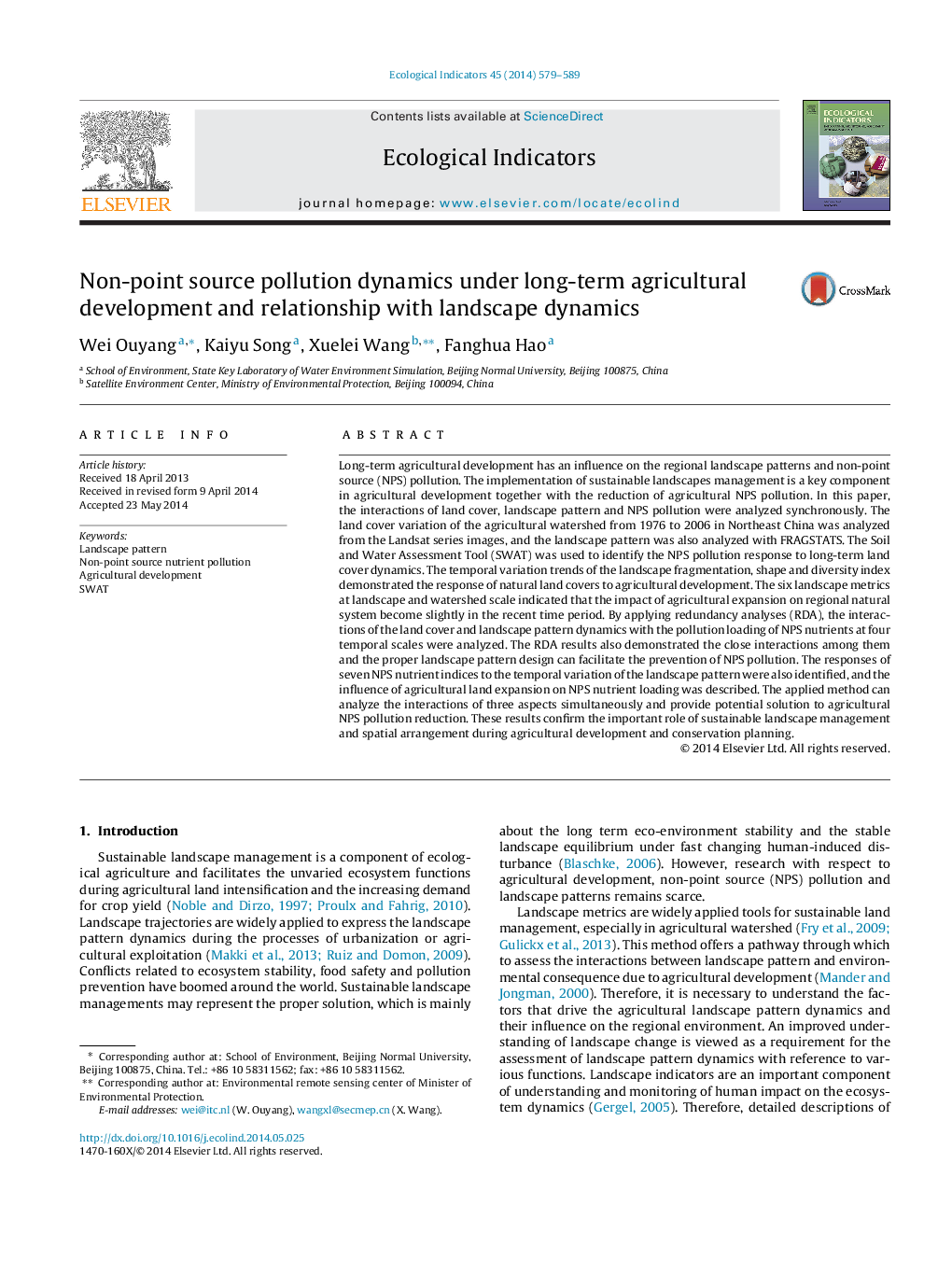| Article ID | Journal | Published Year | Pages | File Type |
|---|---|---|---|---|
| 4373099 | Ecological Indicators | 2014 | 11 Pages |
•Landscape response to land cover variation under agricultural development from 1976 to 2006 was analyzed.•Temporal-spatial variations of non-point pollution under land covers conversion were simulated with SWAT.•Redundancy analyses showed the interactions of landscape, land cover and pollution synchronously.•Landscape sustainable management benefited pollution reduction and agricultural landscape planning.
Long-term agricultural development has an influence on the regional landscape patterns and non-point source (NPS) pollution. The implementation of sustainable landscapes management is a key component in agricultural development together with the reduction of agricultural NPS pollution. In this paper, the interactions of land cover, landscape pattern and NPS pollution were analyzed synchronously. The land cover variation of the agricultural watershed from 1976 to 2006 in Northeast China was analyzed from the Landsat series images, and the landscape pattern was also analyzed with FRAGSTATS. The Soil and Water Assessment Tool (SWAT) was used to identify the NPS pollution response to long-term land cover dynamics. The temporal variation trends of the landscape fragmentation, shape and diversity index demonstrated the response of natural land covers to agricultural development. The six landscape metrics at landscape and watershed scale indicated that the impact of agricultural expansion on regional natural system become slightly in the recent time period. By applying redundancy analyses (RDA), the interactions of the land cover and landscape pattern dynamics with the pollution loading of NPS nutrients at four temporal scales were analyzed. The RDA results also demonstrated the close interactions among them and the proper landscape pattern design can facilitate the prevention of NPS pollution. The responses of seven NPS nutrient indices to the temporal variation of the landscape pattern were also identified, and the influence of agricultural land expansion on NPS nutrient loading was described. The applied method can analyze the interactions of three aspects simultaneously and provide potential solution to agricultural NPS pollution reduction. These results confirm the important role of sustainable landscape management and spatial arrangement during agricultural development and conservation planning.
Graphical abstractFigure optionsDownload full-size imageDownload as PowerPoint slide
